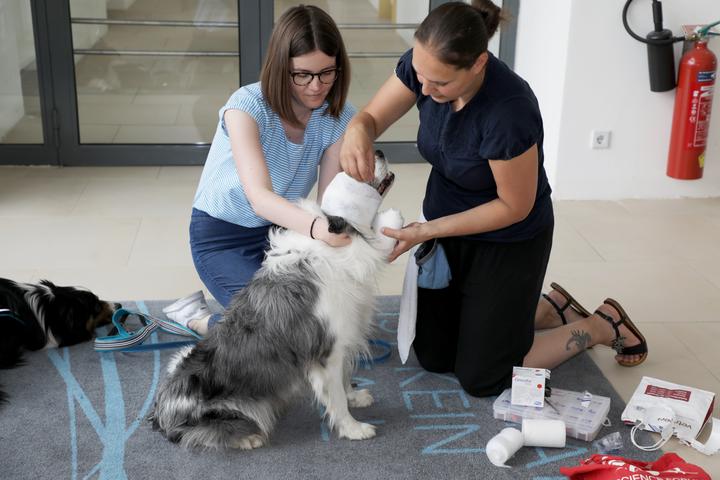 Copyright: Comparative Canine Neuroimaging Unit (CCNU)
Copyright: Comparative Canine Neuroimaging Unit (CCNU)
Abstract
In recent years, two well-developed methods of studying mental processes in humans have been successively applied to dogs. First, eye-tracking has been used to study visual cognition without distraction in unrestrained dogs. Second, noninvasive functional magnetic resonance imaging (fMRI) has been used for assessing the brain functions of dogs in vivo. Both methods, however, require dogs to sit, stand, or lie motionless while yet remaining attentive for several minutes, during which time their brain activity and eye movements are measured. Whereas eye-tracking in dogs is performed in a quiet and, apart from the experimental stimuli, nonstimulating and highly controlled environment, MRI scanning can only be performed in a very noisy and spatially restraining MRI scanner, in which dogs need to feel relaxed and stay motionless in order to study their brain and cognition with high precision. Here we describe in detail a training regime that is perfectly suited to train dogs in the required skills, with a high success probability and while keeping to the highest ethical standards of animal welfare—that is, without using aversive training methods or any other compromises to the dog’s well-being for both methods. By reporting data from 41 dogs that successfully participated in eye-tracking training and 24 dogs IN fMRI training, we provide robust qualitative and quantitative evidence for the quality and efficiency of our training methods. By documenting and validating our training approach here, we aim to inspire others to use our methods to apply eye-tracking or fMRI for their investigations of canine behavior and cognition.